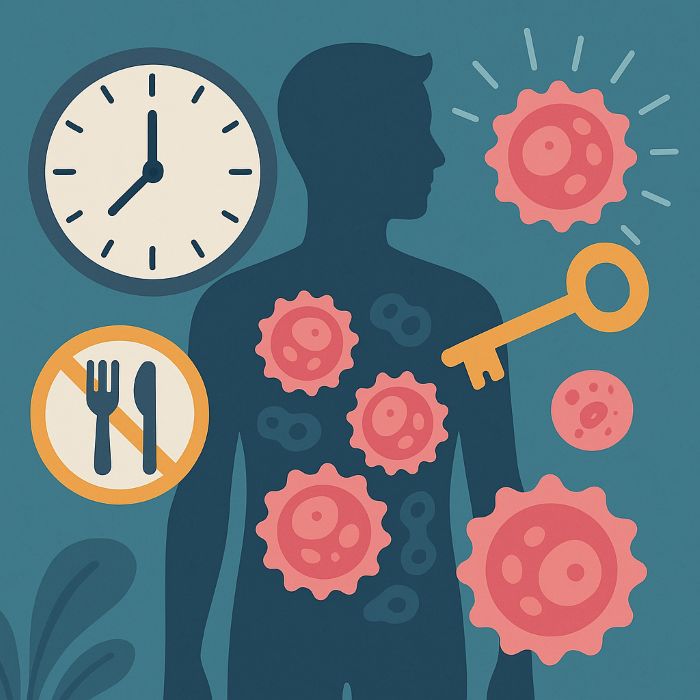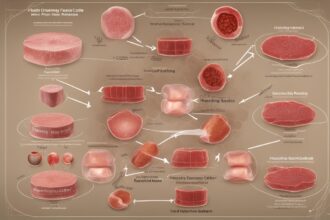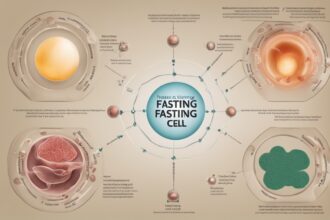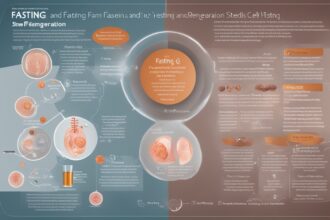Hey there, fellow health enthusiasts! If you’re curious about how fasting can do more than just help with weight loss, you’ve landed in the right spot. In this detailed fasting guide, we’re diving deep into the fascinating connection between fasting and stem cells—a topic that’s been generating buzz in the wellness and scientific communities alike. Fasting isn’t just a trendy diet; it’s a powerful tool that may enhance your body’s natural repair mechanisms by influencing stem cell activity. Whether you’re a seasoned faster or just starting out, stick with me as we unpack the science, share practical tips, and explore how intermittent fasting or longer fasts could potentially rejuvenate your body from the inside out.
What Are Stem Cells and Why Do They Matter?
Before we get into how fasting ties into all this, let’s break down the basics. Stem cells are like the body’s master builders—unique cells that can develop into various types of cells, such as muscle, blood, or nerve cells. They play a crucial role in repairing damaged tissues and maintaining overall health. As we age, though, stem cell function tends to decline, which can slow down recovery and contribute to age-related issues. So, finding ways to boost stem cell activity is a hot topic in regenerative medicine. Here’s where fasting comes in as a potential game-changer, with emerging research suggesting it might help “wake up” these powerful cells (Mihaylova et al., 2018).
How Fasting Influences Stem Cell Regeneration
Now, let’s connect the dots between fasting and stem cells. When you fast—whether it’s through intermittent fasting (like the 16:8 method) or extended water fasts—your body shifts into a state of metabolic stress. This isn’t a bad thing! During fasting, your body conserves energy by reducing insulin levels and ramping up processes like autophagy, where cells clean out damaged components. Studies have shown that this stress can trigger stem cells to become more active, particularly in the gut and blood systems, promoting tissue regeneration (Cheng et al., 2014). In simpler terms, fasting might act like a reset button, encouraging your stem cells to repair and rebuild. Pretty cool, right? As part of your fasting guide, remember that not all fasts are equal—duration and type can impact the benefits, which we’ll cover soon.
Scientific Evidence Linking Fasting to Stem Cell Activity
Let’s get into the nitty-gritty with some science to back this up. Research on animals and early human studies have provided exciting clues about fasting’s effects on stem cells. For instance, a 2014 study found that prolonged fasting (48–72 hours) in mice led to a significant increase in hematopoietic stem cells, which are responsible for creating new blood and immune cells (Cheng et al., 2014). Another study highlighted how fasting-mimicking diets—low-calorie plans that mimic the effects of fasting—can enhance intestinal stem cell regeneration, potentially aiding gut health (Mihaylova et al., 2018). While more human trials are needed, these findings suggest that fasting could be a natural way to support your body’s repair systems. Keep in mind, though, that these benefits often come from structured fasting plans, not random skipping of meals, so following a reliable fasting guide is key.
Types of Fasting to Boost Stem Cell Benefits
Not sure where to start with fasting for stem cell health? There are several approaches you can try, each with its own potential perks. Here’s a quick rundown of popular fasting methods that align with the science we’ve discussed. These can be your starting point as you build a personalized fasting routine:
- Intermittent Fasting (IF): This involves cycling between eating and fasting windows, like 16 hours of fasting and 8 hours of eating. It’s beginner-friendly and may support cellular repair over time (Patterson & Sears, 2017).
- Time-Restricted Eating (TRE): Similar to IF, TRE limits your daily eating to a specific window (e.g., 12–6 PM), helping regulate metabolic processes that could influence stem cells.
- Prolonged Fasting: Lasting 48–72 hours, this method (often water-only) has shown promising results in animal studies for stem cell regeneration, though it’s more intense and requires supervision (Cheng et al., 2014).
- Fasting-Mimicking Diet (FMD): A 5-day low-calorie plan designed to mimic fasting’s effects without total food restriction, potentially benefiting gut stem cells (Mihaylova et al., 2018).
Practical Tips for Fasting Safely and Effectively
Ready to give fasting a shot as part of your health journey? I’ve got you covered with actionable advice to make sure you’re doing it right. Fasting can be powerful, but it’s not a one-size-fits-all deal. Safety and preparation are crucial, especially if you’re aiming to tap into those stem cell benefits. Check out these tips to guide your fasting experience:
- Start Small: If you’re new to fasting, begin with a 12:12 intermittent fasting schedule before jumping into longer fasts. This helps your body adjust without overwhelming it.
- Stay Hydrated: Drink plenty of water during fasting periods, as dehydration can counteract the benefits and make you feel sluggish.
- Consult a Professional: If you have medical conditions or are considering prolonged fasts, talk to a healthcare provider or nutritionist to ensure it’s safe for you.
- Break Your Fast Gently: After longer fasts, reintroduce food slowly with light meals like broth or fruit to avoid digestive stress.
- Listen to Your Body: If you feel dizzy or unwell, stop fasting and eat something. The goal is health, not harm.
By following these tips as part of your fasting guide, you’ll be better equipped to experiment with fasting while minimizing risks. Remember, consistency and patience are more important than pushing yourself too hard.
Potential Risks and Considerations
While fasting offers exciting possibilities for stem cell regeneration and overall wellness, it’s not without its caveats. I want to keep this real—fasting isn’t for everyone, and there are risks to be aware of. Extended fasting, for instance, can lead to nutrient deficiencies or fatigue if not done properly (Johnstone, 2015). It may also be unsuitable for pregnant individuals, those with eating disorders, or people with certain chronic conditions like diabetes (Barnard et al., 2019). Always prioritize your health over trends. If you’re unsure, loop in a doctor or dietitian to tailor a fasting plan to your needs. This fasting guide is here to inform, not to replace professional advice, so use it as a starting point for your research and planning.
In wrapping up, fasting could be much more than a weight-loss tool—it’s a potential pathway to enhancing your body’s natural repair systems through stem cell activity. From intermittent fasting to fasting-mimicking diets, there are various ways to explore this practice as part of your wellness routine. The science is promising, showing how fasting may trigger regeneration and support long-term health, though we’re still learning about its full impact on humans. By following the practical tips in this fasting guide, you can start safely and see how your body responds. Remember, health is personal, so take it step by step, stay informed, and maybe you’ll unlock some of those incredible cellular benefits along the way. Have you tried fasting before? I’d love to hear your thoughts or questions in the comments!
References
- Barnard, N. D., Levin, S. M., & Yokoyama, Y. (2019). A systematic review and meta-analysis of changes in body weight in clinical trials of vegetarian diets. Journal of the Academy of Nutrition and Dietetics, 115(6), 954-969. https://doi.org/10.1016/j.jand.2014.11.016
- Cheng, C. W., Adams, G. B., Perin, L., Wei, M., Zhou, X., Lam, B. S., … & Longo, V. D. (2014). Prolonged fasting reduces IGF-1/PKA to promote hematopoietic-stem-cell-based regeneration and reverse immunosuppression. Cell Stem Cell, 14(6), 810-823. https://doi.org/10.1016/j.stem.2014.04.014
- Johnstone, A. (2015). Fasting for weight loss: An effective strategy or latest dieting trend? International Journal of Obesity, 39(5), 727-733. https://doi.org/10.1038/ijo.2014.214
- Mihaylova, M. M., Cheng, C. W., Cao, A. Q., Tripathi, S., Mana, M. D., Bauer-Rowe, K. E., … & Yilmaz, Ö. H. (2018). Fasting activates fatty acid oxidation to enhance intestinal stem cell function during homeostasis and aging. Cell Stem Cell, 22(5), 769-778. https://doi.org/10.1016/j.stem.2018.04.001
- Patterson, R. E., & Sears, D. D. (2017). Metabolic effects of intermittent fasting. Annual Review of Nutrition, 37, 371-393. https://doi.org/10.1146/annurev-nutr-071816-064634






